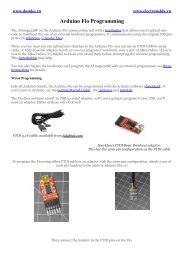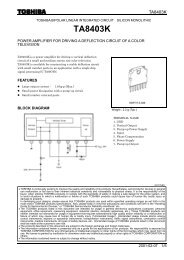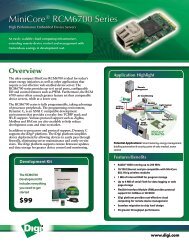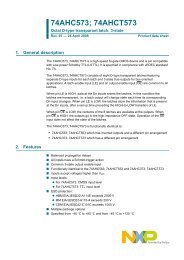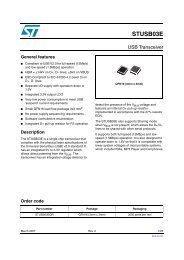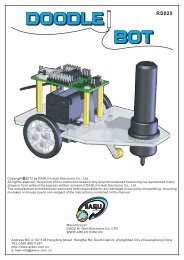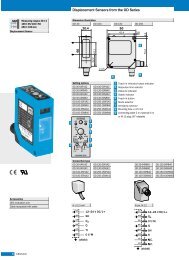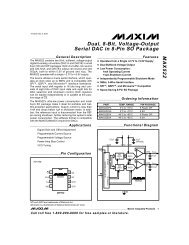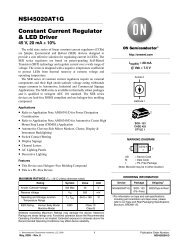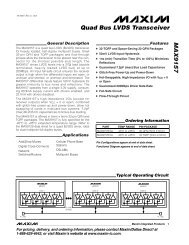UNIGATE CL - LONWorks
UNIGATE CL - LONWorks
UNIGATE CL - LONWorks
You also want an ePaper? Increase the reach of your titles
YUMPU automatically turns print PDFs into web optimized ePapers that Google loves.
Deutschmann Automation GmbH & Co. KG<br />
Installation guidelines<br />
12.2.2 <strong>LONWorks</strong> communication interface<br />
12.2.2.1 Bus line with copper cable<br />
This interface is located on the module in the form of a 4-pin screw-plug-connector on the lower<br />
side of the housing.<br />
• Plug the <strong>LONWorks</strong> connecting plug onto the socket labelled "<strong>LONWorks</strong>".<br />
12.2.3 Line routing, shield and measures to combat interference voltage<br />
This chapter deals with line routing in the case of bus, signal and power supply lines, with the aim<br />
of ensuring an EMC-compliant design of your system.<br />
12.2.4 General information on line routing<br />
- Inside and outside of cabinets<br />
In order to achieve EMC-compliant routing of the lines, it is advisable to split the lines into the following<br />
line groups and to lay these groups separately.<br />
⇒ Group A:<br />
⇒ Group B:<br />
⇒ Group C:<br />
• shielded bus and data lines (e. g. for ProfibusDP, RS232C and printers etc.)<br />
• shielded analogue lines<br />
• unshielded lines for DC voltages ≥ 60 V<br />
• unshielded lines for AC voltage ≥ 25 V<br />
• coaxial lines for monitors<br />
• unshielded lines for DC voltages ≥ 60 V and ≥ 400 V<br />
• unshielded lines for AC voltage ≥ 24 V and ≥ 400 V<br />
• unshielded lines for DC voltages > 400 V<br />
The table below allows you to read off the conditions for laying the line groups on the basis of the<br />
combination of the individual groups.<br />
Group A Group B Group C<br />
Group A 1 2 3<br />
Group B 2 1 3<br />
Group C 3 3 1<br />
Table 3: Line laying instructions as a function of the combination of line groups<br />
1) Lines may be laid in common bunches or cable ducts.<br />
2) Lines must be laid in separate bunches or cable ducts (without minimum clearance).<br />
3) Lines must be laid in separate bunches or cable ducts inside cabinets but on separate cable<br />
racks with at least 10 cm clearance outside of cabinets but inside buildings.<br />
12.2.4.1 Shielding of lines<br />
Shielding is intended to weaken (attenuate) magnetic, electrical or electromagnetic interference<br />
fields.<br />
Interference currents on cable shields are discharged to earth via the shielding bus which is connected<br />
conductively to the chassis or housing. A low-impedance connection to the PE wire is<br />
particularly important in order to prevent these interference currents themselves becoming an<br />
interference source.<br />
Wherever possible, use only lines with braided shield. The coverage density of the shield should<br />
exceed 80%. Avoid lines with foil shield since the foil can be damaged very easily as the result of<br />
tensile and compressive stress on attachment. The consequence is a reduction in the shielding<br />
effect.<br />
14.7.10 <strong>UNIGATE</strong> fieldbus gateway <strong>UNIGATE</strong> <strong>CL</strong> - <strong>LONWorks</strong> V. 1.5 29



